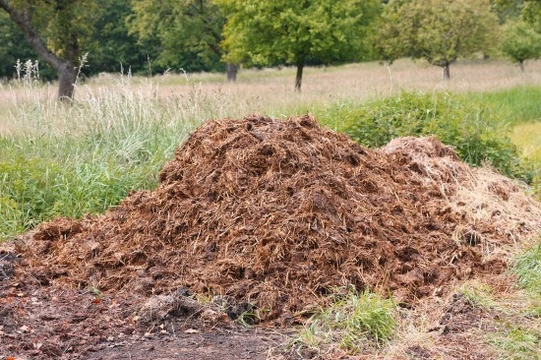
Horse Manure the smelly truth - How the law on waste could get you in a heap of trouble
No one likes mucking out, and a muck heap is an unwanted but necessary part of horse keeping. But did you know that there is more to a muck heap than just making a pile and getting a farmer to spread it out every few years.
Waste or not waste
The good news is that if you meet certain conditions horse manure is not waste. The requirements are…
- It is to be used as a soil fertilisers.
- Its use is part of the lawful practise of spreading on clearly identified parcels of land
- Its storage is limited to the needs of those spreading operations to be carried out on agricultural holdings, whether yours or someone else’s.
You have to meet all of those requirements for it to not be considered waste.
If you don’t have a clearly identified area to spread the manure, then it is classified as solid waste.
Dealing with manure as a horse owner or small scale stables
The average horse produces 7.5 tonnes of manure a year, and that’s not taking into account the bedding and other waste products which may be mixed in the manure heap. Some bedding cannot be disposed of as easily as others, so it’s worth taking that into account when choosing your horses bedding.
The Environment Agencies preferred method and the easiest and most cost effective for small scale operations is composting and then use as a fertiliser. But there are some regulations and practises that mean your heap is manageable and legal.
Building a compost heap
There are things that should be included in a compost heap, and there are things that should be left out. Do not mix household waste, even food scraps into the compost heap, as this means the entire manure heap becomes mixed waste. Certain bedding won’t compost down, or in itself might be classed as waste. In theory all illness and disease should be killed by the composting process, but it’s still not advisable to add bedding and manure from sick horses to the mix.
Composting works best with straw as a bedding, although wood chips, shavings and sawdust can all be used. A deep litter system is considered the best option if you plan on composting everything, this requires careful handling to prevent ammonia build up and damp bedding, which might be unhealthy for your horse. Otherwise it may be worth having an area to collect a certain amount of manure and bedding before adding it all to the pile. Some stables have two piles, one composting, and one being built up.
The composting pile should be around 2.5 m wide and 2m high, to allow the correct amount of heat to build up, and still allow air circulation. Covering it with a woven textile fabric will allow air circulation, whilst excluding light and most of the water, there are textiles that are custom made for this job and can be purchased. Adding 10% soil to the pile will help stabilise the decomposition process, and help kick start the process by introduces some of the micro fauna that drives decomposition. To speed things up a bit more you can buy compost bacteria, or add a good amount of compost from a previous heap.
The manure heap needs to be damp, in the summer and at the start you may need to water it slightly, but do not allow it to get wet enough to run off. It may be necessary to turn the pile a few times to aerate the heap, and if it’s too dry you can dampen the pile at that time.
At this stage the pile should start to heat up rapidly, and begin to reduce in volume, in warm weather this can take as little as 3 weeks. When it starts to cool it needs to be turned and possibly watered.
Now is a good time to move the heap to somewhere where it can be in contact with the soil to allow worms and other creatures to help the decomposition, and allowed to stand for a couple of months. By the end of this point the texture, colour and smell should all have altered, and by now it should look more like soil, rather than manure, if the bedding or other components don’t look like they’ve totally broken down then it may be worth turning again and leave to stand until everything is completely broken down.
Once it’s all broken down you now have a great source of compost, containing nitrogen, phosphorus and potassium, plus a whole host of microorganisms that help improve soil structure and biological activity. At this point it’s great for allotments, market gardeners and even for spreading back on your own fields to help improve the quality of the soil.
What not to do
- You are not allowed to burn waste from horses.
- Allow any run off, not only from your compost heap, either when wetting it or from rain, but also from washing hay, or even rinsing out stables. If you have a large heap, or think that rain may lead to run off you need to store it on concrete and site a drain so that you can store the run off.
- Site your manure or composting heap closer than 10m from any river, stream or waterway, or 50m from a spring, well or borehole.
- Site your heap near field drains.
- Put more compost on land than is healthy for the eco system.
Manure heaps should not be sited so as to be a nuisance to others, that might include neighbours who may object to the smell, or so as walkers cannot enjoy footpaths or views.



